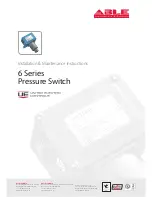
UANTA COMPUTER INC.
Layer 2,3,IPv6+QoS Switch
_____________________________________________________________________________
Layer 2,3,IPv6+QoS Network Switch User Manual Version 0.1
Page: 803/970
LS ID - The Link State ID identifies the piece of the routing domain that is being described
by the advertisement. The value of the LS ID depends on the advertisement's LS type.
Age - The time since the link state advertisement was first originated, in seconds.
Sequence - The sequence number field is a signed 32-bit integer. It is used to detect old
and duplicate link state advertisements. The larger the sequence number, the more
recent the advertisement.
Checksum - The checksum is used to detect data corruption of an advertisement. This
corruption can occur while an advertisement is being flooded, or while it is being held in a
router's memory. This field is the checksum of the complete contents of the advertisement,
except the LS age field.
Options - The Options field in the link state advertisement header indicates which
optional capabilities are associated with the advertisement. The options are:
Q - This enables support for QoS Traffic Engineering.
E - This describes the way AS-external-LSAs are flooded.
MC - This describes the way IP multicast datagrams are forwarded according to the
standard specifications.
O - This describes whether Opaque-LSAs are supported.
V - This describes whether OSPF++ extensions for VPN/COS are supported.
Command Buttons
Refresh - Refresh the data on the screen with the present state of the data in the switch.
11.2.3.3.10.
Configuring OSPF Virtual Link
Selection Criteria
Create New Virtual Link - Select this option from the dropdown menu to define a new
virtual link. The area portion of the virtual link identification is fixed: you will be prompted
to enter the Neighbor Router ID on a new screen.
Area ID and Neighbor Router ID - Select the virtual link for which you want to display or
configure data. It consists of the Area ID and Neighbor Router ID.
















































